The US Centers for Disease Control and Prevention have recently sounded an alarm. There was a completely uncommon birth defect identified, which was caused by a rare virus being spread by mosquitoes last January, warning women in America and raising awareness in a worldwide spectrum not to get pregnant if they are or have been in certain countries in South America.
The said virus causing an alarm was named Zika, and it is maintaining its momentum of breaking into multiple territories as we speak.
It was reported that the Zika virus have already made a massive introduction of restlessness in May of 2015 after the Pan American Health Organization (PAHO) issued a similar alert about the first confirmed Zika virus infection in Brazil. In a span of months, the virus took hold of the country, bringing an outbreak of cases involving adult neurological abnormalities and birth casualties which are closely linked to the virus. Since then, the virus has continued to extend its territory in Central and South America and the Caribbean.
On January 15, a case of a microcephalic baby born in Oahu, Hawaii created a widespread viral like panic in the country after the baby showed a positive Zika virus test. The baby had a head that was shrunken and had an incomplete brain growth, which was established as an effect of the Zika virus infection. With the rise of its popularity in the main vine, there is enough evidence to conclude that the virus has that drastic effect towards infants.
The said problem had caused the scientists to go back to their drawing boards and review the dark side of the virus, while finding ways to control its spread.
So what are the main points that we should be aware of?
1. Zika is a mosquito-borne virus.
Zika virus is a mosquito-borne single-stranded RNA virus related to dengue virus. In the Americas, Zika virus is primarily transmitted by Aedes aegypti, but Aedes albopictus mosquitoes can also transmit the virus. Zika virus is transmitted to humans primarily through the bite of an infected Aedes species mosquito. Aedes mosquitoes are aggressive daytime biters and feed both indoors and outdoors.
2. Zika needs a vessel for it to be transferred.

For now, it is highly proven that the virus is transmitted easily through mosquito bites, and not directly from person to person. Once the mosquito bites and draws blood from an infected person, it becomes a carrier of the virus, passing the virus on to the next person that it feeds on. The possibility of sexual transmission is still under investigation, as there are random cases which showed evidence that such transmission is made plausible via blood transfer. Considerably, blood transfusion is one way to contract the virus. The mother-to-fetus transmission has also been documented as a possible mode of transfer.
3. It was dormant for decades.
Zika was first identified in the Zika forest of Uganda in 1947, but had barely made any alarming damage to human beings by then. Some 14 to 15 cases were recorded at that time, until it made its first outbreak appearance in 2007. The said outbreak was reported in the Yap Island in Micronesia.
Sporadic outbreaks were then discovered in the Pacific Islands like Fiji and Vanuatu. The analysis of these outbreaks got a distinctive pattern: the rise of infants with neurological birth defects and microcephaly corresponds to the outbreak of Zika virus in those areas, leading to a conclusion that the virus had been responsible for the said infant condition.
4. It could start with symptoms similar to common flu.
The initial adult symptoms include a break of rashes which are usually mild in nature, headaches, joint tenderness, fever, bone pains, and conjunctivitis. The symptoms usually appears between three to 12 days after the mosquito bite. After a week or so, the patient infected with the virus usually recovers.
Death and hospitalization are rare and extreme cases are infrequent, thus the attention given to this disease in the past was not that intensive. But due to the recent events, scientists have then considered that they may have actually closed an eye to the real face of the virus.
Zika virus was also linked to neurological and neuromuscular conditions in adults like Guillain Barré syndrome, causing progressive paralysis. Research also showed that the virus can stay in a woman’s body for about 12 days, but not everyone becomes symptomatic.
5. Zika and Guillain-Barre syndrome.
There are several cases of Guillain-Barré syndrome reported in patients following suspected Zika virus infection. The relationship between Zika virus infection and Guillain-Barré syndrome is not known.
6. Why it Caused Widespread Concern.
In retrospect, there was a surge of Zika cases in Brazil last year with more than 1.5 million identified cases, possibly brought about by the arrival of travellers in the country during the World Cup in 2014. Within that period of time, Brazil has been seeing more newborns delivered with microcephaly.
Amniotic fluid in some pregnant women who came from Brazil with microcephalic infants had revealed a positive Zika virus, indicating a strong corresponding influence with the said birth defect.
It was noted that Brazil normally gets microcephalic babies at about several hundred cases each year (a range of 100 to 200 cases), but by October 2015, statistics have shown a drastic rise of affected Brazilian babies, with 3,500 cases recorded in that year alone. That’s 17 times more compared with the numbers in 2014! For the record, this has been the biggest outbreak recorded in Brazil, as millions of individuals become infected with the virus in just a short span of time.
7. Pregnant women are vulnerable.
Zika virus can be transmitted from a pregnant mother to her fetus during pregnancy or around the time of birth. We do not know how often Zika perinatal transmission occurs.
In January of this year, CDC scientists found Zika virus strains in the brains of two babies with microcephaly who have expired within 24 hours after birth. Two pregnancies that ended in miscarriages have also yielded the virus after testing. Pregnant women in Illinois and Florida, who tested positive for Zika virus, were also linked to have travelled to South America in the past. But with all these observations noted by CDC, they are still inconclusive if some of the birth defects with microcephaly and infant loss via miscarriage were made possible by the virus alone.
Enough evidence had pointed out that the first trimester is a vulnerable period, putting the baby at risk of acquiring birth defects once the mother was infected. Scientists are still working on gathering enough data to make a correlation of Zika and with the risks involved in the different stages of pregnancy.
8. It caused major travel alerts in South America.
As of this time, the places in red alert are the following: Barbados, Bolivia, Brasil, Colombia, Dominican Republic, Ecuador, El Salvador, French Guiana, Guadeloupe, Guatemala, Guyana, Haití, Honduras, Martinica, México, Panamá, Paraguay, Puerto Rico, Saint Maarten, Suriname, and Venezuela. However, this is by no means an exhaustive list. As the virus spreads all throughout the continent, more and more areas would be added soon. Anyone travelling to these areas and neighbouring areas are firmly warned to protect themselves from mosquito bites.
9. The search for the cure is still going on.
As of this time, there is no cure and vaccines yet against Zika. Treatment is generally supportive and can include rest, fluids, and use of analgesics and antipyretics. Because of similar geographic distribution and symptoms, patients with suspected Zika virus infections also should be evaluated and managed for possible dengue or chikungunya virus infection. Aspirin and other non-steroidal anti-inflammatory drugs (NSAIDs) should be avoided until dengue can be ruled out to reduce the risk of hemorrhage. People infected with Zika, chikungunya, or dengue virus should be protected from further mosquito exposure during the first few days of illness to prevent other mosquitoes from becoming infected and reduce the risk of local transmission.
Protection against mosquito bites and eliminating mosquito breeding grounds are amongst the highly recommended guidelines to prevent the spread and acquisition of the disease. Blood tests are of necessity to identify subjects for quarantine until such time that the person with the virus is no longer a risk to society.
10. The reason why the rise of mosquitoes was like a roller coaster – sudden.
There was also an alarming rise in the medical cases that are mosquito driven, such as the Dengue fever and Chikungunya, affecting Central and South America starting in the year of 2013. This is a distressing observation as such cases were never recorded in the Western hemisphere prior to that year. Remarkably enough, the mosquito responsible for spreading Zika, Dengue, and Chikungunya are all of the same type: the Aedes mosquito (in particular, the Aedes aegypti and the Aedes albopictus mosquitoes). The spread of the virus was also closely related to global warming and globalization. It is most likely that global warming have helped the mosquitoes to thrive, as a warm environment acts as a catalyst that stimulates its survival.
Health officials are acting upon the phenomena by making it a point to prevent its spread through awareness programs. It is predicted that the spread would likely emulate a pattern similar to the Dengue fever in the United States, starting from Puerto Rico, going to Florida, then to the Gulf Coast states, and ultimately reaching Hawaii. That being said, the projected time for the virus to reach Florida and Texas would probably occur in the spring or summer. As temperature becomes favourable for the mosquitoes, so does the viability of the Zika virus being carried by it. The vessel used for its spread can be prevented to enter your doors with extra caution and regular information updates.
“Better housing construction, regular use of air conditioning, use of window screens and door screens, and state and local mosquito control efforts helped to eliminate [widespread transmission of mosquito borne infections like malaria and dengue] from the mainland,” Lyle Petersen, the director of the CDC’s division of vectorborne diseases, said.
The state of the disease as of this time is frightening in the sense that the cases are on the rise with no signs of standing still. It is “spreading explosively,” throughout the continent of America as per the World Health Organization (WHO). Nevertheless, surveillance and control of the virus is possible with the support and cooperation of everyone.




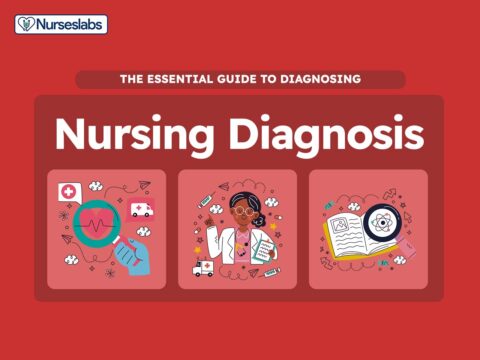
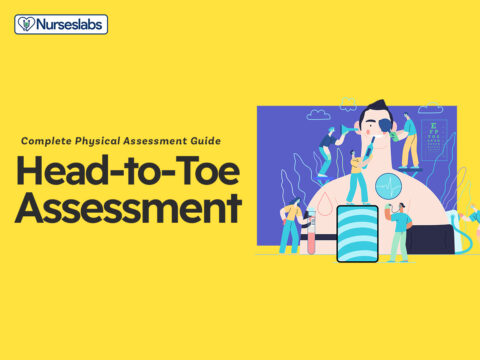

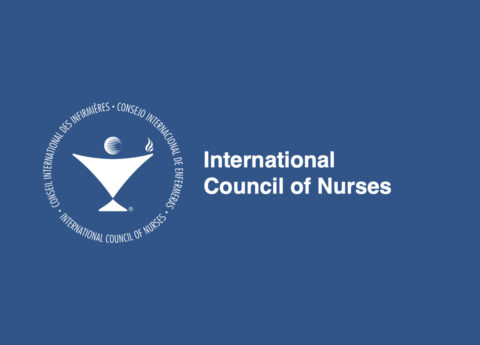





























Leave a Comment